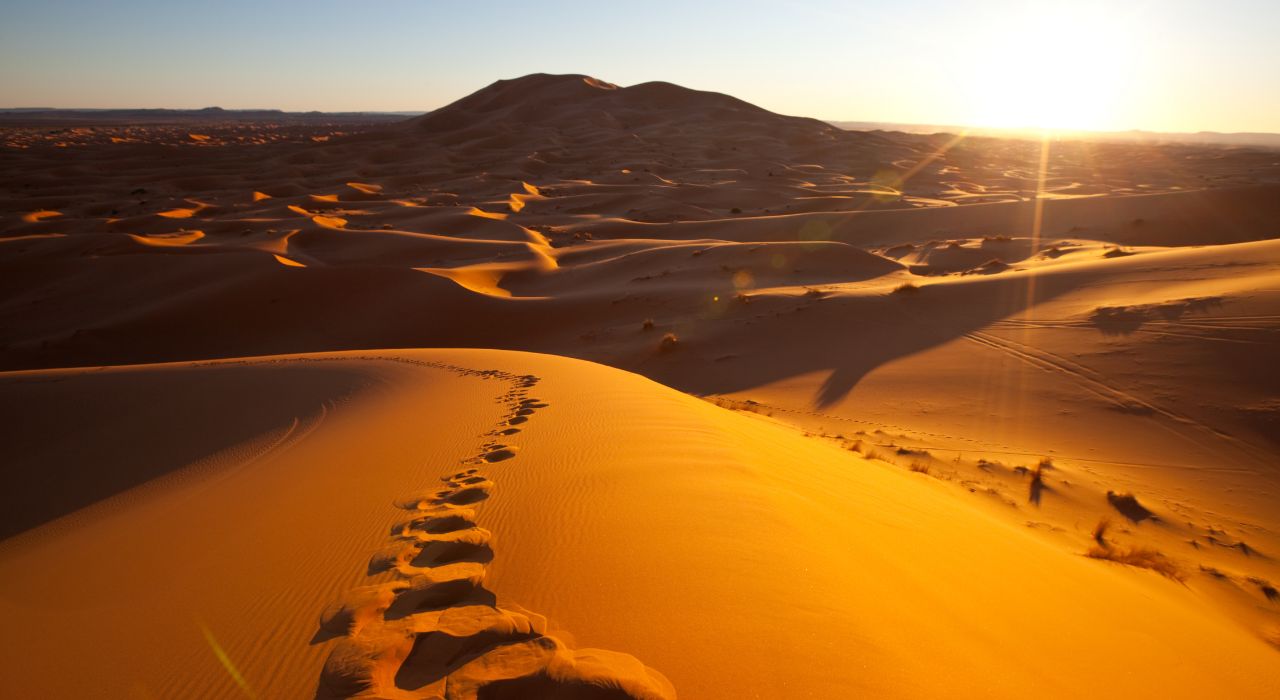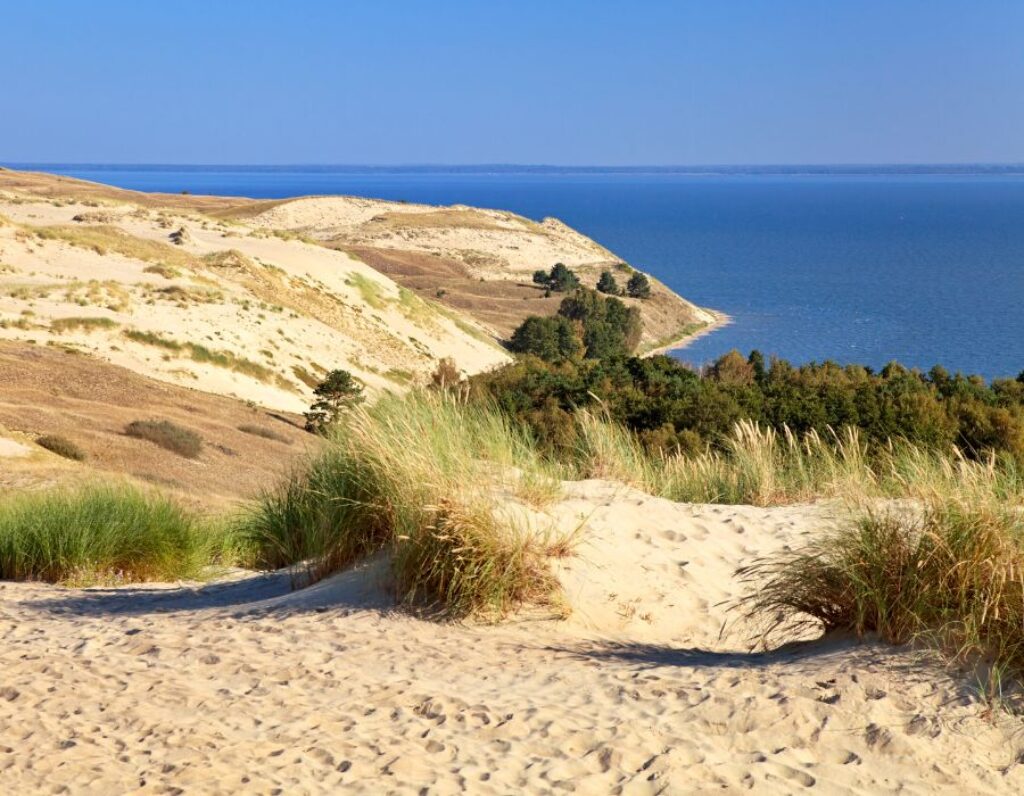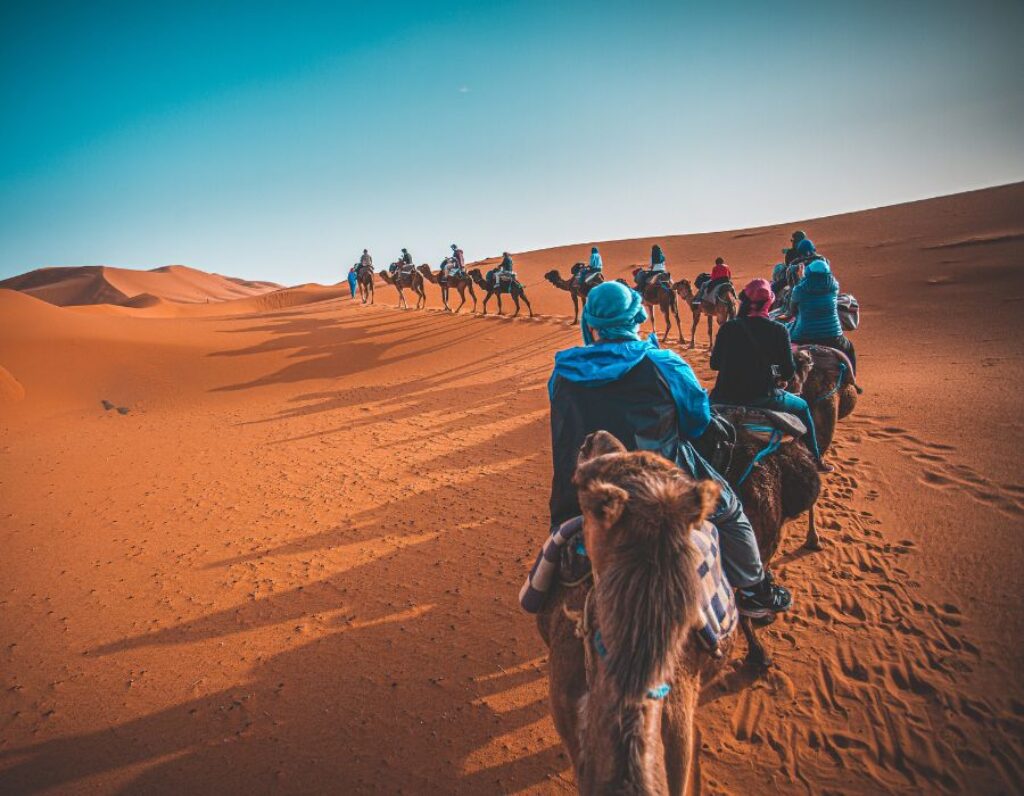
KYZYLKUM DESERT
The Kyzylkum Desert, which is translated from Turkic as “Red Sands,” is one of the largest deserts in the world, with an area of about 300 thousand square kilometers, located in Central Asia. The Kyzylkum Desert, bounded in the northwest and northeast by the Aral Sea and the Syr Darya River, respectively, in the east by the spurs of the Tien Shan and Pamir-Alai, and in the southwest by the Amu Darya River, is located in the interfluve of these rivers, in Uzbekistan and Kazakhstan and partly in Turkmenistan.
This place, most of which is occupied by sandy massifs, can offer travelers a unique opportunity to visit the most inaccessible places in Uzbekistan by jeep or “ship of the desert” – a camel and see the famous “Ship Graveyard” in Muynak and the Ustyurt Plateau. Here, you can also see ancient caravan routes and salt lakes, swim in the famous Aydarkul Lake and learn a lot of interesting things about the crafts, traditions and customs of the local population.
CURONIAN SPIT IN LITHUANIA

One of the most popular places for tourists is the Curonian Spit, included in the UNESCO list. This is the longest coastal strip of dunes, one of the highest in Europe, stretching from Kaliningrad to Klaipeda. The territory of the Curonian Spit belongs to two countries: Russia and Lithuania. The northern part of the spit, 52 km long, is located in Lithuania and is occupied by a large national park, which is home to beautiful beaches, centuries-old pine trees and rare species of animals and birds.
Every year in spring and autumn, from 10 to 20 million birds fly here, migrating from the Baltic to the White Sea. The center of the Curonian Spit is the city of Neringa. Previously, these places were inhabited by ancient tribes – the Curonians, who left behind many memorable places. These include ancient buildings, Witch Mountain, and wooden houses decorated with elegant carvings. Particularly interesting are the Curonian burials, covered with planks and decorated with various hearts, flowers and birds.
After visiting the Curonian Spit, it is worth visiting the Lithuanian Maritime Museum, canoeing or snowboarding, picking mushrooms and berries, fishing, as well as swimming in the bay and sunbathing. One of the longest bicycle paths in the country runs through the spit so that you can explore all the medieval fortresses, lighthouses and other attractions using a bicycle.
DON SAHARA

In the Petropavlovsk district of the Voronezh region, there is a real desert – the Don Sahara. The writer and publicist Vasily Peskov called the Don Sahara the Peter and Paul Desert. Its area is about one hundred hectares with quartz sand. Experts still cannot say the origin of this desert. Some believe that this is the result of the Ice Age. Others claim that the sand trail stretches from the territory of Kalmykia, and this sand was brought by the eastern wind – “Afghan”. Locals call the sun-scorched land a dead field; nothing grows here. For a long time, residents wanted to plant various crops here, but everything was in vain.
In the middle of the last century, they decided to fight in the desert. By order of Stalin, young pines began to be planted here, which were supposed to surround the desert. About 40 years were spent on landscaping the area. The planted pines tightly surrounded the “dead field”, and the movement of the sands was stopped. Now, the desert is one of the main attractions of the Petropavlovsk region, a great place for beautiful photographs, hiking, and simply enjoying the nature of your native land.
DESERTS BIG AND SMALL BADGERS
Big and Small Badgers are the name given to the deserts of Central Asia, which are located on the northern side of the Aral Sea. Most of their territory belongs to Kazakhstan, Aktobe region. In shape, the deserts are two narrow strips stretching from north to south: the Big Badgers are about 200 kilometers long, and the Small Badgers are about half as long.
In flat areas, sandy areas have shrubs and sparse vegetation. Despite this, these areas are used as pastures for livestock breeding. The wind here forms sand ridges and bizarre dunes. Tourism in the desert takes extreme forms, as it requires the necessary preparation and a supply of water and food. Temperatures in summer rise to 40 degrees, and at night, the air cools sharply.








